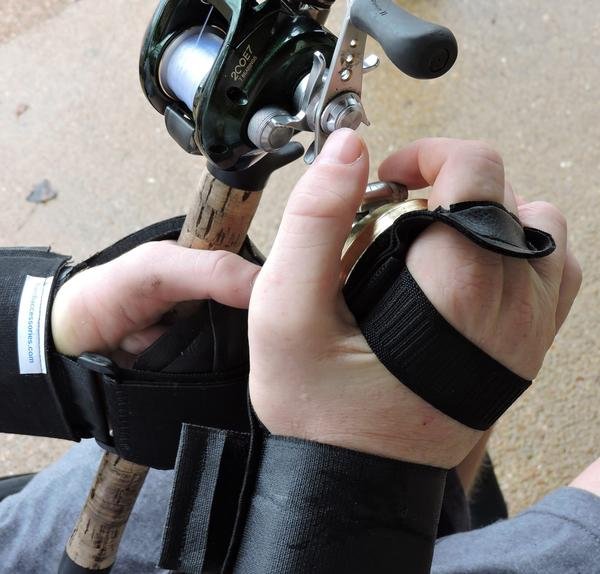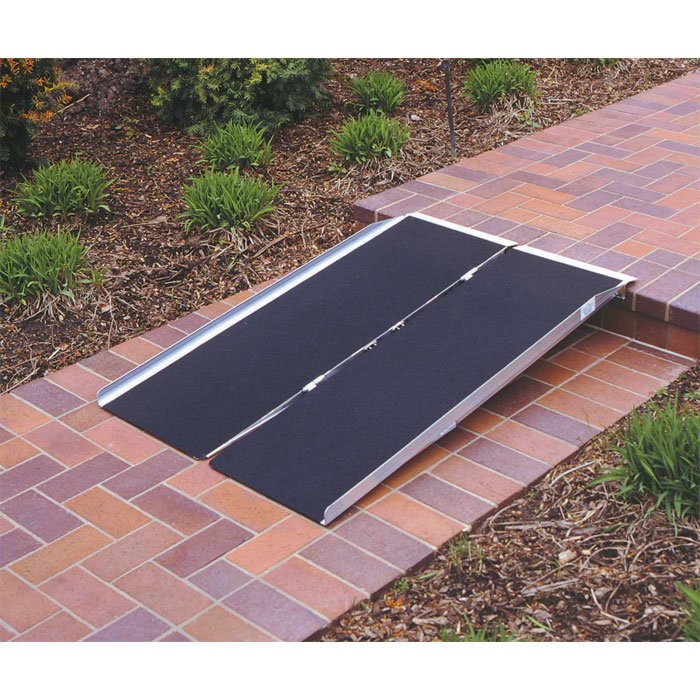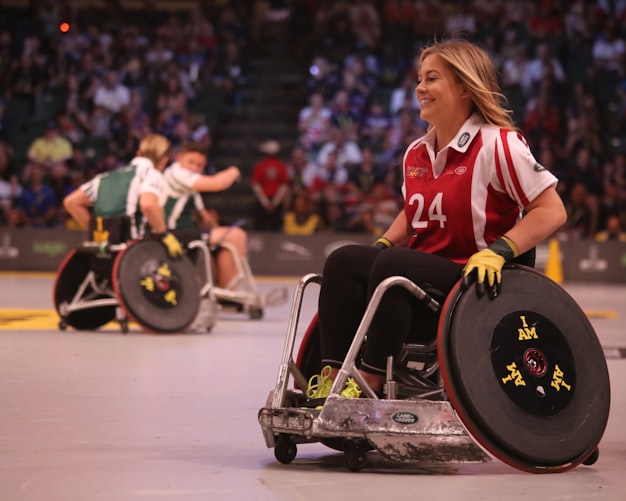Staying Active and Connecting to Your Sports Community Online By Sarah Werner
The pandemic has made it more difficult for everyone to get adequate exercise. This lack is most acutely felt by people with disabilities who are at a higher risk for complications from COVID-19 than other groups, making returning to the gym or to group exercise more dangerous. The warm summer weather is great for people who participate in solitary outdoor sports like handcycling and wheelchair racing. It’s harder if your usual mode of exercise is with a group class, at the gym, or playing a team sport. And even the solitary sports can get lonely without connection to fellow athletes. Fortunately there are lots of ways to stay active by engaging with an online community in whatever sport or mode of workout you love. Connecting online can also help you develop new skills in your sport or learn how to repair or spruce up your equipment while you have extra time on your hands. With more people working and attending school online, the world of sport has moved into the virtual world more than ever as well.
Adaptive Yoga is for Everyone by Sarah Werner
Yoga is one of the most popular forms of exercise out there these days, and as it has grown, there has also been a movement to make yoga accessible to more people than ever before. One outgrowth of this is adaptive yoga, where instructors tailor poses and practices to the abilities of people who use wheelchairs, have limb differences, or other mobility-limiting conditions. Now that most yoga studios have been forced to close temporarily due to COVID-19, online yoga classes are proliferating and are an excellent way for people with disabilities to get started with their own yoga practice at home.
Yoga is Everywhere
Yoga is an ancient art that has been practiced for over four thousand years. It originated in India, but has now spread throughout the world with a diverse array of schools, or styles, of practice. Hatha yoga is perhaps the most well-known style of yoga in North America and combines breathing with holding the body in particular poses, called asanas. As yoga has gained in popularity and moved into the mainstream, accessible or adaptive yoga classes have also sprung up to offer the practice to people with a variety of physical limitations. There are chair-yoga and yoga-for-arthritis classes being offered at senior centers. Gentle or restorative yoga classes that can be found at many community yoga studios. Teaching yoga to people with specific conditions—including multiple sclerosis, autism, and spinal cord injuries—are even addressed in certain yoga teacher training programs. Now more than ever is a great time for people of all abilities to practice yoga.
Adaptive Fishing Kit by Handi- Fishing That Never Stops
 The loss of limb function or mobility should not stop you from enjoying your favorite sport. Sportaid has an adaptive fishing kit that will have you continue enjoying your fishing sport and if they are your relish, then you still have too many fishes to fry! The fishing kit from Handi includes the grasping cuff, fishing palm cuff and the reel deal. You can choose to buy it as a complete kit or only buy a piece of the three. They have the following features.
The loss of limb function or mobility should not stop you from enjoying your favorite sport. Sportaid has an adaptive fishing kit that will have you continue enjoying your fishing sport and if they are your relish, then you still have too many fishes to fry! The fishing kit from Handi includes the grasping cuff, fishing palm cuff and the reel deal. You can choose to buy it as a complete kit or only buy a piece of the three. They have the following features.
The Reel Deal
The reel deal is the real deal for individuals with limited or no hand function. It comes with the following features.
- It securely attaches to the bait casting and spinning reels where the handle is no more than one inch wide at the knob’s widest point.
- It is removable and can be attached to another reel handle. It will not properly attach to T-bar handles. Heavy duty Velcro on the outer side of the Reel Deal attaches to heavy duty Velcro on the Reel Deal Cuff.
- The Reel Deal works in collaboration with the cuff, it allows an angle to attach their hand with the cuff to the handle with the reel deal on it and reel in your line or fish.
- You can easily detach your hand from the handle for casting.
The A-Z Guide of Wheelchair Ramps
Wheelchair ramps come in different shapes, styles and sizes. Some are fixed while some are semi-permanent while others could even be portable. And that is not all, they can also either be platform ramps or track ramps, folding or telescoping ramps. The variations are plenty you can chose a ramp that can be just big enough to get over a threshold of your doorway to a ramp that is made to navigate a user to the very top of a long flight of stairs. Whether you are looking for a new ramp for your home or business or need to update your old one, you need to understand fully and consider a number of things that concern wheelchair ramps.
come in different shapes, styles and sizes. Some are fixed while some are semi-permanent while others could even be portable. And that is not all, they can also either be platform ramps or track ramps, folding or telescoping ramps. The variations are plenty you can chose a ramp that can be just big enough to get over a threshold of your doorway to a ramp that is made to navigate a user to the very top of a long flight of stairs. Whether you are looking for a new ramp for your home or business or need to update your old one, you need to understand fully and consider a number of things that concern wheelchair ramps.
When building, upgrading or purchasing a wheelchair ramp, you need to have the following in mind.
Weight is Key
It goes without saying that the job of the ramp is to basically lift weights. Your weight to be precise, the weight specifications of ramps must, therefore, come first on your checklist. Wheelchair ramps are designed for different types of wheelchairs, some are for electric wheelchairs, some for manual wheelchairs and some for just any wheelchair. Your choice of wheelchair ramp should be in line with what it was designed for, it may save a future accident from happening. Continue reading
7 Amazing Tips for Selecting Crutches
 Crutches will make walking a lot easier in cases where you have a condition but do not need to be confined to a wheelchair. Your physical therapist or orthopedist should help fit you and guide you on the best crutches to purchase. And that advice coupled with the tips I will share with you in this post will ensure you choose the right crutches convenient for your comfort in your movement.
Crutches will make walking a lot easier in cases where you have a condition but do not need to be confined to a wheelchair. Your physical therapist or orthopedist should help fit you and guide you on the best crutches to purchase. And that advice coupled with the tips I will share with you in this post will ensure you choose the right crutches convenient for your comfort in your movement.
Adjustability of the Crutches
The freedom to choose options best suited for your comfort is a plus; since everyone has their preferences and levels of comfort differ among people. Your choice of crutches should include this consideration, whether they can be shortened or lengthened to accommodate the different heights of people. Most aluminum crutches have a button that is pushed to adjust their height. Wooden crutches, however, do not have the option of lengthening or shortening them, hence, if you choose to purchase wooden ones ensure you get them in the right size.
Lightweight vs Heavyweight
Aluminum crutches are lighter compared to wooden ones. And as you might expect, wooden crutches cost less than the aluminum ones. Also, aluminum crutches are easy to use despite their higher cost. This information is vital in helping you make a decision on which crutches is best suited for you and your pocket. Continue reading
The Ultimate Guidelines to Be Active in a Wheelchair

First Things First
The foremost step you should take is consulting your doctor the moment you decide to embark on physical exercise. Your doctor will guide you on the type of exercises and the intensity of the activities that you can engage in. All you need to do here is set small attainable goals and choose activities you like doing. It may look like you are not doing much but it is one step at a time and boom! You are there. Continue reading
3 Basic Strengthening Workouts For Wheelchair Users
Wheelchair users have to exert more effort when using their shoulders and arms. This makes it all the more important to improve upper body resistance through strengthening exercises that will help build muscle strength as well as improve upper body movement.
Currently, there are 2.2 million wheelchair users in the US, according to NICHD. The demand for wheelchairs is rapidly increasing together with the growth of the ageing population, which is why it is necessary to help seniors and disabled individuals improve their quality of life through enhancing upper body mobility and flexibility. If you believe that you need to start working on your upper body, start with these three basic strengthening workouts designed for wheelchair users.
Seated Tricep Dips
Using a wheelchair demands increased upper body strength, and this effective style of workout will help you meet that demand. The Seated Tricep Dips focus on the chest, triceps, and front of the shoulders. Start by sitting in a chair or your wheelchair and placing your hands on the armrests. Make sure to position the hands right beneath the shoulders; they should be aligned. Push your body up until your arms are completely extended. Lower your body slowly until you are seated properly. Continue reading






 Ever noticed how people tend to stare at a struggling to propel wheelchair user in the streets? Many are laden with sympathy and see the user as a helpless being. I used to have the same belief but I was wrong. To be honest with you
Ever noticed how people tend to stare at a struggling to propel wheelchair user in the streets? Many are laden with sympathy and see the user as a helpless being. I used to have the same belief but I was wrong. To be honest with you 






